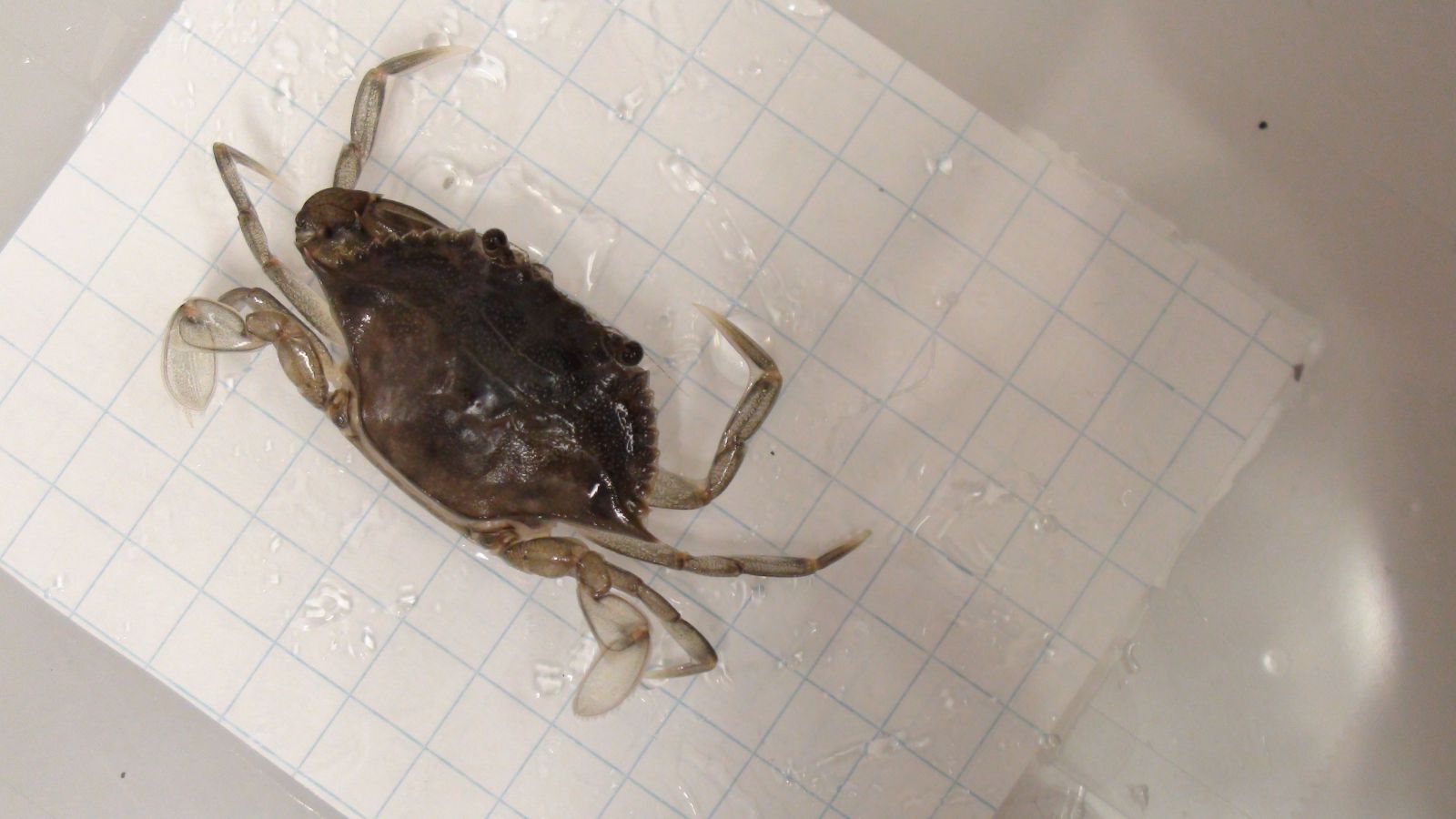The Case of the Disappearing Blue Crab
School:
Chesapeake High School / STAT Teacher Baltimore County Public Schools, MarylandLesson Plan Standards
1.1.1 1.2.3 1.2.4 1.2.5 1.2.6 1.2.7 1.3.2 1.3.3 1.3.4 1.4.2 1.4.3 1.4.6 1.4.9 1.5.1 1.5.2 1.5.5 1.5.9 1.7.6 2.1.1 3.3.3 3.4.2 3.5.2 3.5.3 3.6.1 6.2.3 6.4.3 6.4.4 6.4.5Lesson Summary
"The Case of the Disappearing Blue Crab" is designed for high school Biology, Aquatic Science, and or Environmental Science students. Students begin the lesson by learning interesting facts about the Blue Crab (Callinectes sapidus) and the Hematodinium dinoflagellate spp. organism to hook them into the lesson. Students then create a graph that illustrates the population decline since the 1940’s and outbreaks of Hematodinium against environmental pressures; which then begs for the question to be asked, "Is Hematodinium the culprit?" Students then explore mock crab hemolymph samples and test for the presence of Hematodinium DNA using Gel Electrophoresis. This provides students the opportunity to apply their knowledge and understanding of DNA and current biotechnology "fingerprinting" methods. Students conclude that Hematodinium is indeed present in their crab sample and are then given the task of creating an information pamphlet or commercial to explain to the public why and how we can save the Blue Crab from Hematodinium.

In vitro life cycle of Hematodinium spp. from Norway Lobster, Appleton & Vickermen 1998. Cross referenced at,
http://www.vims.edu/research/departments/eaah/programs/crustacean/research/hematodinium/life_cycles/index.php

Blue crab from the IMET blue crab project. Photo by Dr. Eric Schott.
Research Experience:
During the summer of 2008 Ms. Clark worked with Dr. Eric Schott and his assistant Holly Bowers on the Hematodinium dinoflagellate spp. and the Blue Crab (Callinectes sapidus) project at the Center of Marine Biotechnology in Baltimore, MD, now known as the Institute of Marine and Environmental Technology (IMET), http://www.umces.edu/imet. Currently, Ms. Clark is a STAT resource teacher for Baltimore County Public Schools.Since the 1940's there has been a dramatic decline in C. sapidus harvests due to over fishing, habitat destruction, environmental pollutants, and disease. Hematodinium is a parasitic dinoflagellate that attacks the hemolymph of the blue crab which causes fatigue and ultimately, death. Our research in the lab primarily focused on collecting water, sediment, and crab hemolymph samples from known "hot spots" and analyzing them for Hematodinium. The goals of our efforts were to determine if the organism had any environmental preferences, to identify possible reservoirs, and to establish a method of transmission from the environment to the crab. Samples were analyzed for the presence of Hematodinium DNA by quantitative PCR, end-point PCR, and Gel Electrophoresis. While the data that I collected was not conclusive, it is believed through continued research efforts at COMB and other institutions that Hematodinium outbreaks occur from late summer to mid-fall because of a high water temperature and salinity preference.5E For This Lesson Plan
Engagement
Engagement
This activity captures the students' attention, stimulates their thinking, and helps them to access prior knowledge.
What's Killing the Blue Crab?
Students will be able to graph data collected from scientific research in order to determine how the crab population has declined and how environmental factors influence Hematodinium outbreaks.
Exploration
Exploration
In this section students are given time to think, plan, investigate, collect and organize information.
Is Hematodinium spp. the Culprit?
Students will be able to use gel electrophoresis in order to determine if the Blue crab has been infected by Hematodinium.
Explanation
Explanation
Students are now involved in an analysis of their own explorations. Their understanding is clarified and modified because of the reflective nature of the activities.
How do we know if Hematodinium is the Culprit?
Students will be able to analyze their gel in order to determine if Hematodinium DNA is present in crab hemolymph. Students will also be able to investigate various biotech techniques available to scientists in order to select the best methods for positively identifying a suspect.
Extension
Extension
This section gives students an opportunity to expand and solidify their understanding of the concepts and to apply them in a real-world context.
Why Save the Blue Crab?
Students will be able to investigate the ecological role of the blue crab and synthesize the harmful effects of Hematodinium on its population in order to create in informational brochure or commercial to increase public awareness.
Evaluation
Evaluation
This performance-based activity helps students to connect all of the pieces of information involved in these lessons.
Evaluation
Students will be able to demonstrate their understanding of importance of the blue crab to the health of the Chesapeake Bay and the dangers of the parasite Hematodinium spp. by writing a formal lab report, creating an information brochure to increase public awareness, and implementing a blue crab population and/or Hematodinium prevalence management technique.



